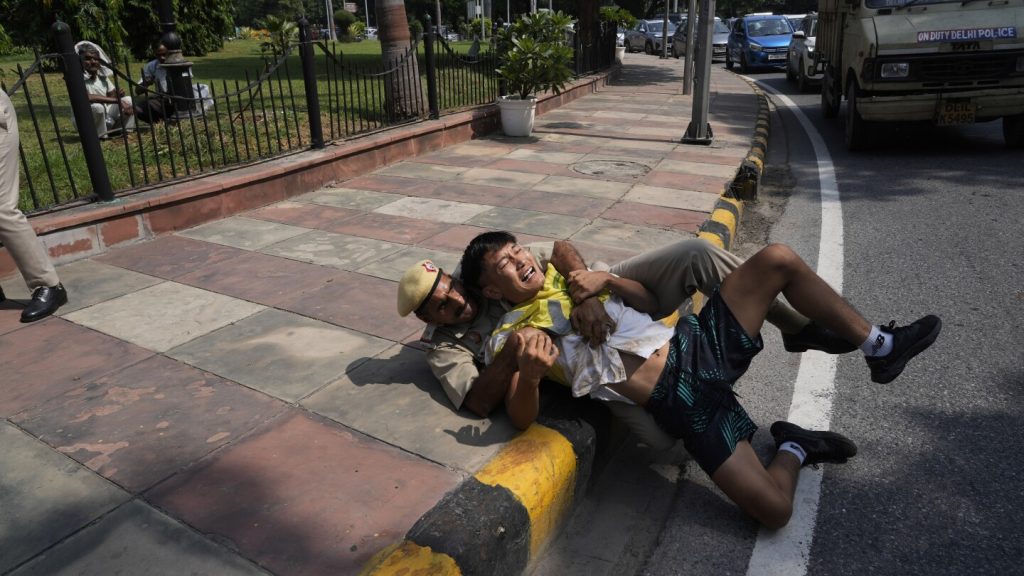The Tibetan Youth Congress organized a protest outside China’s embassy in India to raise awareness about the human rights situation in Tibet. The protesters accused China of repressing Tibetan culture and called for the international community to support their cause. Some protesters were detained by the police after attempting to enter the embassy, which led to a confrontation between the two groups. The protest coincided with China’s 75th anniversary of Communist Party rule, highlighting the ongoing tensions between Tibetans and the Chinese government.
The Tibetan government-in-exile in India also condemned China for denying fundamental human rights to the people of Tibet and for attempting to eradicate Tibetan identity. The Dalai Lama, the spiritual leader of Tibetans, has been living in exile in northern India since fleeing Tibet in 1959. The government-in-exile, along with other Tibetan representatives, is based in Dharamshala, where they continue to advocate for autonomy and the preservation of Tibet’s Buddhist culture. The Dalai Lama has consistently denied China’s accusations of being a separatist and instead emphasizes the importance of protecting Tibetan culture.
Despite China’s annexation of Tibet in 1951, tens of thousands of Tibetan refugees currently reside in India, seeking asylum from the oppressive regime in Tibet. The Tibetan community in India continues to face challenges in preserving their cultural heritage and maintaining their identity in exile. The protest outside the Chinese embassy served as a stark reminder of the ongoing struggle faced by Tibetans living both in Tibet and in exile, as they fight against cultural oppression and human rights violations perpetrated by the Chinese government.
The protesters at the embassy emphasized the urgent need for the Chinese Communist government to stop the cultural genocide in Tibet and allow Tibetans to freely practice their religion and traditions. They called on the international community to support their cause and put pressure on China to respect the rights of Tibetan people. The clash between the protesters and the police underscored the deep-rooted tensions between Tibetans and the Chinese government, as the Tibetan struggle for autonomy and cultural preservation continues to face significant obstacles.
As the protest unfolded outside the Chinese embassy, it highlighted the resilience and determination of the Tibetan community to fight for their rights and raise awareness about the ongoing human rights abuses in Tibet. The presence of Tibetan refugees in India serves as a reminder of the forced displacement and persecution faced by many Tibetans under Chinese rule. The Dalai Lama’s emphasis on autonomy rather than separatism reflects the complex nature of the Tibetan struggle, as they navigate between their desire for independence and their commitment to preserving their cultural heritage.
The protest at the Chinese embassy symbolized the ongoing resistance of Tibetans against Chinese repression and cultural assimilation in Tibet. The Tibetan Youth Congress’s call for support from the international community underscores the importance of global solidarity in addressing the human rights situation in Tibet. Despite facing challenges and setbacks, the Tibetan community remains resilient in their struggle for autonomy and cultural preservation, as they continue to advocate for the recognition and protection of Tibetan identity and rights.


